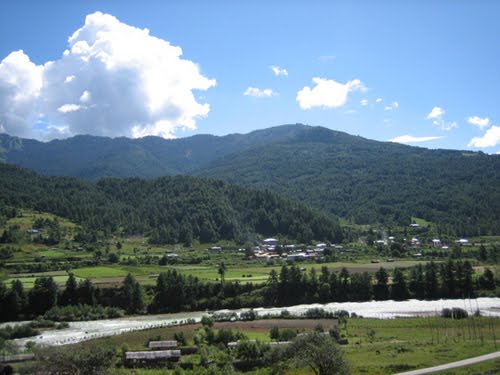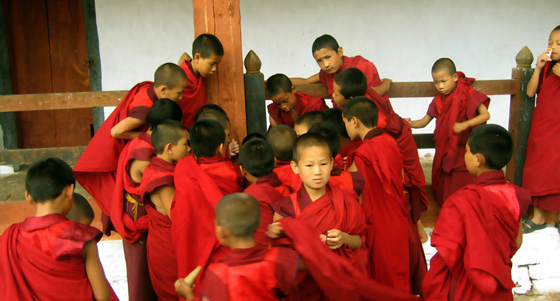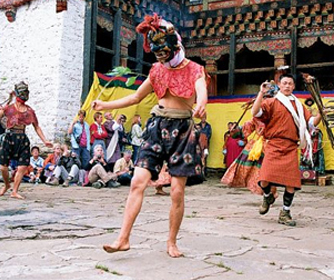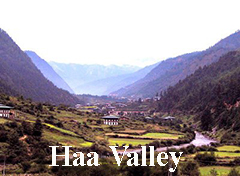
[ Thimphu Festival Tour | Thangbi Mani Festival Tour | Jambay Lhakhang Drup Tsechu Festival Tour | Black Crane Festival Phobjikha Tour | Punakha Domchey Festival Eight Nights Tour | Punakha Domchey Festival Ten Nights Tour | Chorten Kora Tsechu (arrive Paro, Depart Paro) | Chorten Kora Tsechu (arrive Paro, exit India) | Chorten Kora Tsechu (arrive India, exit Paro) | Gom Kora Tsechu (enter Paro, exit Paro) | Gom Kora Tsechu (enter Paro, exit India) | Gom Kora Tsechu (enter India, exit Paro) | Paro Tsechu Festival Tour | Paro Tsechu Festival 7 Dzongkhags Tour | Paro Tsechu Festival Tour with Druk Path Trek | Ura Yakchoe Festival Tour ]
Thangbi Mani Tsechu Festival
- 11 Nights 12 Days
 -
Bumthang, Central Bhutan
-
Bumthang, Central Bhutan
Dzongkhags covered: Paro, Thimphu,Wangdue,
Bumthang
Duration: 11 Nights 12 Days
Trip Grade: Easy
Itinerary Outline:
Day 1: Arrive at Paro
Airport:
Day 2: Paro - Thimphu
Day 3: Thimphu – Wangdue
Day 4: Wangdue – Bumthang
Day 5: Bumthang Thangbi Mani Festival
Day 6: Bumthang Sightseeing
Day 7: Bumthang Thangbi Mani Festival & Sightseeing
Day 8: Bumthang – Wangdue
Day 9: Wangdue – Paro
Day 10: Paro- Day Excursion to Haa
Day 11: Paro Sightseeing
Day 12: Paro Departure
 Highlights:
The Mani festival is a boisterous occasion that takes place in the most
spectacular of settings. Performed by the monks of Chiwong, it depicts
the victory of Buddhism over the ancient ‘Bon’ religion.
Highlights:
The Mani festival is a boisterous occasion that takes place in the most
spectacular of settings. Performed by the monks of Chiwong, it depicts
the victory of Buddhism over the ancient ‘Bon’ religion.
Trip Overview: Thangbi
Mani Festival, Bumthang (right young lamas getting ready for the
festival)- This is a four day festival performed in Tangbi Lhakhang,
located in Tangbi village. This festival is organised by the people of
three vilages viz. Thangbi, Goling & Kharsath and displays the rich
cultural heritage of this ancient Lhakhang. It will be an opportunity
to come in closer contact with the local folks and their way of living,
beliefs and more. People from all over the villages come here to witness
the festival dressed in their best ghos and kiras. It is believed that
this festival brings happiness, better harvest and prosperity of the village.
Thangbi Lhakhang is one of the historically significant temples in Bumthang.
It is situated in the north of Kurje at an altitude of 2730 m and is surrounded
by the beautiful village of Thangbi. The Lhakhang (temple) was built by
the 4th Shamar Rinpoche called Chhoki Drakpa (the Red Hat Karmapa: 1453-1524).
Towards the north of Thangbi lies the two clustered villages of Goling
(2740 m) and Kharsath (2750 m) within a radius of 2 km. Further north
on a higher elevation, Shukdak Monastery (2950 m) founded by Guru Pema
Sambhawa is perched on a mysterious cliff overlooking the beautiful Thangbi
valley. A very pleasant one-hour walk from the road head takes one to
this secretive place.
Thangbi Mani is a four day festival which is a display of rich tradition and celebrates the cultural heritage of this ancient Lhakhang. It is held annually from 14th to the 17th of the eighth month of the Bhutanese calendar. The people from the three villages of Thangbi, Goling and Kharsath have been organising the annual festival since its inception. The tradition which prevailed a long time ago is now gradually fading away. In earlier days people of all walks of life in that community actively participated in making this festival a great success. But now, due to changing social values and migration to the bigger towns by some of the sponsoring households, this valuable tradition is being threatened. The Gomchens (lay monks) of this monastery perform the rituals for the entire festival, while some young men and women perform the mask and folk dances. The thirteenth of the eight month of the Bhutanese calendar is the preliminary day when all the people in the community flock together to witness the rehearsal of the mask dances in the courtyard. The next day starts the main event of the festival by making offerings to the local deities. On the same day at around 7 pm all the mask dances scheduled for the following day is presented to the public and the guests as well which perhaps lasts till midnight. The days event is flagged off by performing the burning ceremony (Ginsek) thus driving away or subduing evil sprits.
The following day i.e 15th (Full moon) of the eighth month of the Bhutanese calendar at around 10 am a ceremonial procession from the Temple marks the start of the Festival. The Mewang Ceremony (Fire Blessing) is performed in an open ground. The Gomchens perform the purification rituals while all present jump over the flames to get themselves purified from their sins and evil deeds. It is believed that if one is able to jump over the flame three times he or she is protected from ill luck and misfortunes are removed for that entire year. That is why one finds people from all walks of life attempt to jump across the flame three times to be blessed for the whole year. Then the mask dances and folk dances are performed as scheduled in the enclosed courtyard of the temple. Of all the dances Goem Bernak is believed to be the most secret Dance (Tercham).
The Legend goes that when Karma Pakshi, (1204-1283) the 2nd Karmapa was being tortured by one of the Kings in China by hanging him by his beard, the Mahakali (Lham Rangjungmo), the Female Protecting Deity of the Karmapa reported this incident to Goembernak (Black Mahakala), the Male Protecting Deity. When Goembernak knew that his Master Karmapa was on the verge of dying he came down heavily on the Chinese king. He manifested himself into a giant sized-figure, stretched his one foot and placed it in front of the palace of the King of China while his other foot was firmly pegged in Tsurphu (Tibet). Goembernak's trousers on one foot was folded up to his knee level as he had no time to fold the other trouser. He shoved his sword under the palace of the Chinese king causing tremors and threatening to destroy his palace if his master was not released. The King of China, frightened of the consequences, freed Karmapa along with offerings of valuable items to the Karmapa seeking forgiveness. It is said that the Karmapa flung all the valuables into the lake in front of the King's palace in China to be transported to the lake in Tsurphu Monastery in Tibet from were he would retrieve them. The Goembernak dance is then performed to commemorate this victory over the King of China and the uniqueness of this dance is that dancers perform this dance with one trouser folded up to knee level while the other trouser is let loose.
There are some significant traditions which are worth mentioning. These events take place simultaneously while dances are being performed: The Temple is U-Shaped in design. At the two projecting courtyards mates are laid and two tiny tables with jug of Chang (alcohol) and a cup remain filled all the time on both sides. Some men drink the Chang occasionally and refill. The cup is supposed to be full all the time. The designated place on the right belongs to the senior men of Kharsath while the left side belongs to the men of Goling. They are supposed to be the Chiefs of the Community. Around the men sit the ladies and children of the respective villages. In olden time if outsiders step on the mate they used to be imposed nominal fines. From these two sides there is a time that the men throw buckwheat dough balls on the spectators with screaming noises. This is to eliminate the harmful evil sprits and ward them off from the auspicious gathering. Quite often it happens that the spectators reacted by throwing back the dough balls. When such things happened in the past, it was considered bad omen and sometimes the community leaders imposed fines on the culprits. The fine usually consisted of a bottle of Chang (locally brewed wine) and an apology to the community leaders.
Another interesting age old tradition which is still very active is the offering of Chang and Puta (buckwheat noodles) by the community girls to our honoured guests. The Girls offer Chang and noodles even to the strangers. If you get such treats whether you enjoy or not it is customary that you give some cash present to them (Today the money they collect by entertaining guests goes to the community fund). There is a significant historical background that the community in this valley produced quality buckwheat noodles. During his reign, the Second King, His Majesty Jigme Wangchuk, used to always order Puta from the households of Shukda Goemba quite frequently when he desired a change or when he had Royal Guests.
The festival finally comes to an end by the performance of the closing ritual where all the people of that community gather to receive blessings and pray for the well being of all sentient beings for the year to come.
Detailed Itinerary:
Day 1: Arrive at Paro Airport
You will be received by our guide at the Paro International Airport and escorted to your hotel for refreshment. Today visit the National Museum of Bhutan and Paro Dzong. Get acclimatised to the local surroundings. Overnight in Paro.
Day 2: Paro - Thimphu
We take an hour's drive to Thimphu and transfer to your hotel. Sightseeing in and around Thimphu Valley includes the National Library, the Painting School and the Textile and Folk Heritage Museum. Other sights include the National Memorial Chorten and a drive to Kuenselphodran Nature Park overlooking Thimphu. Stroll around Thimphu town. Overnight at hotel.
Day 3: Thimphu – Wangduephodrang
This morning we depart Thimphu East towards Wangduephodrang. En route enjoy a short break for tea/coffee at Dochula Pass (10,000 ft) and view the Eastern Himalayan Mountain ranges while surrounded by hundreds of prayer flags and Buddhist chortens. Visit the ruins of Wangdue Dzong burnt down by a fire in 2012. Overnight at hotel.
Day 4: Wangdue – Bumthang
It takes 5 – 6 hours to drive between Wangdue and Trongsa. The route crosses the Black Mountains via Pelela Pass (altitude 10,800 ft/3048 metres) before entering the Mangdechhu Valley. Pelela Pass is what divides East and West Bhutan. From Pelela the road follows the Nikka Chhu (River) to the Village of Chendebji. Stop for a picnic lunch at Chendebji. Continue our drive from Trongsa to Bumthang; a 3 hour drive crossing Yotungla Pass (11,000 ft). Overnight at hotel.
 Day 5: Bumthang Tangbi Mani Festival
Day 5: Bumthang Tangbi Mani Festival
Today we attend a very unique Village Festival (left). Masks of glorious demonic demons and animals arouse your senses as you watch the purification take place. We will join the local people for a picnic lunch. Overnight at hotel.
Day 6: Bumthang Sightseeing
Today we will enjoy some Bumthang sightseeing. Bumthang has an individuality that separates it from other regions. Comprised of four smaller valleys, the deeply spiritual region is shrouded in religious legend. Here tales of Guru Padmasambhava and his reincarnation, known as Tertons, still linger. It is also known for its woollen material (yathra) which is hung outside the houses on display for sale. Visit the Jakar Dzong, 7th century Jambay Lhakhang, Kurjey Monastery, Tamshing and Kenchosum Monastery. Overnight at hotel.
Day 7: Bumthang Tangbi Mani Festival & Sightseeing
Returning to Tangbi Mani Festival in the morning. Watch for the Atsara (clown), here seen right. This dancer mimics dancers and entertains onlookers. After lunch we have free time for wandering and shopping. Textile fabric can be purchased here at a good price. It makes for unique and wonderful gifts. Overnight at hotel.
Day 8: Bumthang – Wangdue
Drive to Phobjikha Valley. Stop to view the Black Necked Cranes. These large, beautiful and graceful birds migrate each year from Tibet and Siberia to Phobjikha Glacial Valley on the Western slopes of the Black Mountains. Drive to Wangdue with scenic stops for photos along the way. Visit the Wangdue Dzong after lunch. Overnight at hotel.
Day 9: Wangdue – Paro
After breakfast, drive to Paro via Dochula Pass. We stop at various points along the way to take in the views and have lunch. Overnight at hotel.
 Day 10: Paro- Day Excursion to Haa
Day 10: Paro- Day Excursion to Haa
Day excursion to Haa Valley (left) bordering Tibet. Haa was only recently opened to tourists. On arrival in the picturesque Haa Valley, stroll through the attractive town. Return to Paro and stop at Chelela Pass at 13,000 ft. It is the highest pass on this road and offers fantastic views of Mount Jhomolhari (24,000 ft/7315 metres). Overnight at hotel.
Day 11: Paro Sightseeing
Hike to the famous Taktsang Monastery (Tiger’s Nest). The monastery is perched on a rocky ledge with a drop of 3,000 feet. Here we enjoy snacks and tea at the viewpoint. Overnight at hotel.
Day 12: Paro Departure
Early morning drive to Paro international airport after breakfast and say goodbye. fare well.
|
|
BACK TO FESTIVAL TOURS MAIN PAGE |
